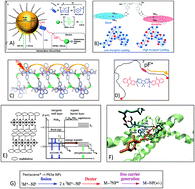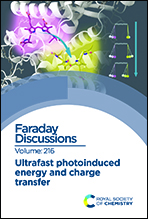Quantum interferences among Dexter energy transfer pathways†
Abstract
Dexter energy transfer in chemical systems moves an exciton (i.e., an electron–hole pair) from a donor chromophore to an acceptor chromophore through a bridge by a combination of bonded and non-bonded interactions. The transition is enabled by both one-electron/one-particle and two-electron/two-particle interaction mechanisms. Assuming that there is no real intermediate state population of an electron, hole, or exciton in the bridge, the transport involves two states that are coupled non-adiabatically. As such, coherent quantum interferences arise among the Dexter energy coupling pathways. These interferences, while related to well understood interferences in single-electron transfer, are much richer because of their two particle nature: the transfer of a triplet exciton involves the net transfer of both an electron and a hole. Despite this additional complexity, simple rules can govern Dexter coupling pathway interferences in special cases. As in the case of single-electron transfer, identical parallel coupling pathways can be constructively interfering and may enhance the Dexter transfer rate. Because of the virtual particle combinatorics associated with two-particle superexchange, two parallel Dexter coupling routes may be expected to enhance Dexter couplings by more than a factor of two. We explore Dexter coupling pathway interferences in non-covalent assemblies, employing a method that enables the assessment of Dexter coupling pathway strengths and interferences, in the context of one-particle and two-particle coupling interactions.

- This article is part of the themed collection: Ultrafast photoinduced energy and charge transfer


 Please wait while we load your content...
Please wait while we load your content...
